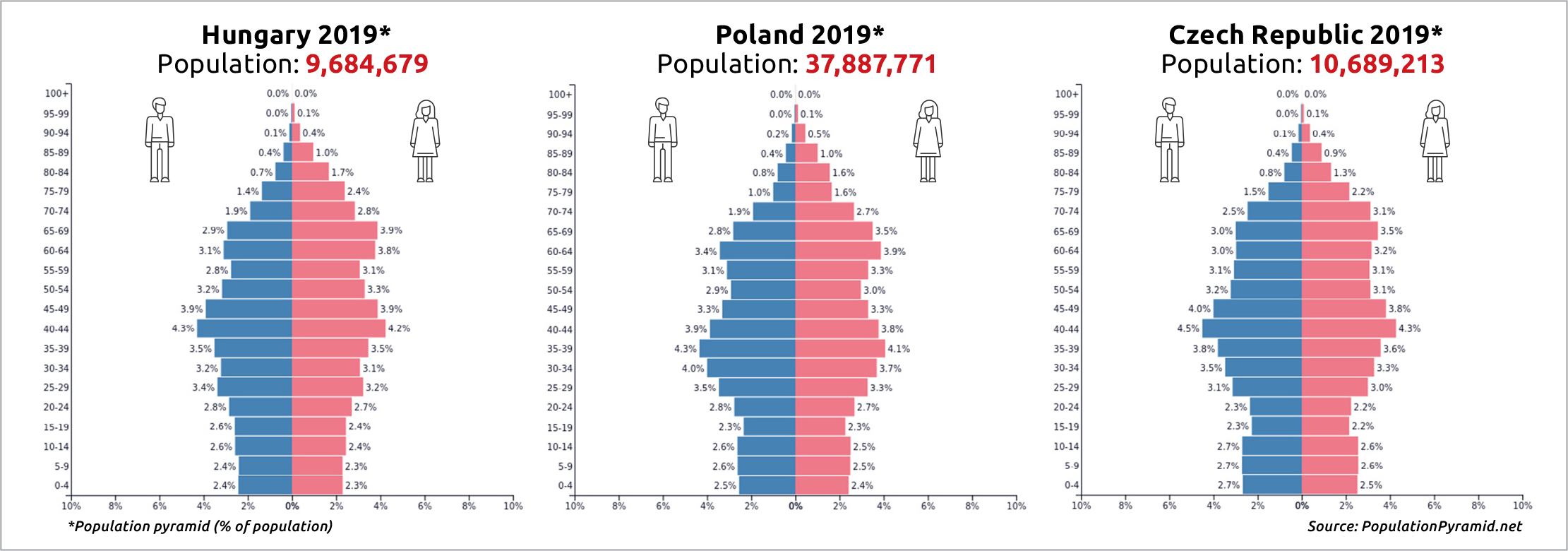Demographics and Gross Domestic Product

Corporate finance columnist Les Nemethy makes the case for why demographics and economics are fundamentally linked.
Many believe that demographics is, at most, remotely related to economics. If you are one of these, perhaps by the time you finish reading this article, you will be convinced how fundamentally demographics underpin economics.
Let’s start with GDP. GDP equals the number of staff in the workforce multiplied by productivity. If the population of certain countries (for example, Russia and China) is expected to decrease by 30-40% over the next 30 years, which is indeed the expectation, unless there is a productivity miracle, their GDP will constitute a smaller share of global GDP.
In Russia, urbanization happened somewhat earlier than in China. People living in overcrowded apartments tend to have fewer children than when those children provide free labor on farms.
In China, the demographic implosion was accelerated by the government’s “one child” policy. Severe sanctions were imposed on families with more than one child. Estimates range as high as 200 million as the number of infant girls killed so that the family could have another chance at having a son. This inhibits family formation.
In Russia, the current demographic implosion is further accelerated by men dying in their prime in Ukraine and massive emigration since the start of the war.
The United States enjoys much healthier demographics: baby boomers, for whatever reason, had more children than in Russia or China.
Retirement Transition
As mentioned, demographics deals not only with population numbers but also the breakdown of the population according to age cohorts. Over the next few years, a large number of baby boomers will transition from the workforce into retirement all over the world. While there is a graying population in the United States, the trend is far more pronounced in China and Russia.
Given that 25-65-year-olds provide the bulk of the workforce, in the unlikely event that birthrates could be encouraged to say double, it would take 25 years for newly borns to enter the workforce, let alone reach peak productivity. There is no instant solution. One might surmise that the relative GDP numbers of Russia and China are peaking at present vis-à-vis the United States.
Russia’s GDP (USD 1.775 trillion) is much smaller than most people realize; indeed, it is less than that of Canada (USD 1.991 tln; both sets of figures are 2021 numbers). Russia packs a punch above its economic weight thanks to its stock of nuclear weapons and a strategic position concerning commodities, most notably oil and gas.
However, as Russia’s GDP declines in relative terms due to demographics, its nuclear arsenal becomes more obsolete, energy stocks become depleted, and the world turns away from hydrocarbons, their influence in the world may well decline. The start of the Ukrainian War may well mark “Peak Russia.” In my opinion, it is “all downhill” from here. Perhaps that is why Vladimir Putin thinks it’s now or never that Russia must exercise its muscle to maintain its geopolitical prominence.
With China, the situation is much more subtle, given that its population is triple that of the United States, its GDP is already larger than America’s on a Purchasing Power Parity basis, and the Chinese are so much more of a force in technology than the Russians. Yet, here as well, a demographic implosion is preordained and irreversible. If China’s population goes down by 30-40%, and the U.S. population goes up by 15-20% by 2050, it is likely that Chinese GDP relative to the States will also shrink.
Central European Implosion
Where does Central Europe stand concerning demographics? Unfortunately, as the following population pyramids demonstrate, they are trending towards imploding as well.
The situation does not look that healthy for Central Europe; in fact, over the past decade or so, births have been even fewer than in Russia or China.
Until age 40-45, wage earners are primarily spending their earnings (having children, making a household, etc.; this triggers consumer spending, which propels GDP growth). After that age, the emphasis is on savings (for retirement).
Of course, one of the most significant aspects of aging populations is the increasing ratio of the elderly, who must be supported (pension, medical, etc.), to workers. In Europe, for example, the proportion of pensioners to workers is expected to rise to 71% by 2060.
There is no short-term solution. If we were to change tax policies, housing availability, etc., today, in 25 years, we could see the pensioner-to-worker ratio improve. The other solution would be to encourage everything that promotes productivity (automation, etc.). For example, Japan, facing a significant problem with an aging population, is using digitization to compensate for the lack of labor.
In my September article, I intend to build on this article and discuss how demographics are also fundamental to finance: performance of financial markets, cost of capital, etc.
Les Nemethy is CEO of Euro-Phoenix Financial Advisers Ltd. (www.europhoenix.com), a Central European corporate finance firm. He is a former World Banker, author of Business Exit Planning (www.businessexitplanningbook.com), and a previous president of the American Chamber of Commerce in Hungary.
This article was first published in the Budapest Business Journal print issue of July 29, 2022.
SUPPORT THE BUDAPEST BUSINESS JOURNAL
Producing journalism that is worthy of the name is a costly business. For 27 years, the publishers, editors and reporters of the Budapest Business Journal have striven to bring you business news that works, information that you can trust, that is factual, accurate and presented without fear or favor.
Newspaper organizations across the globe have struggled to find a business model that allows them to continue to excel, without compromising their ability to perform. Most recently, some have experimented with the idea of involving their most important stakeholders, their readers.
We would like to offer that same opportunity to our readers. We would like to invite you to help us deliver the quality business journalism you require. Hit our Support the BBJ button and you can choose the how much and how often you send us your contributions.








